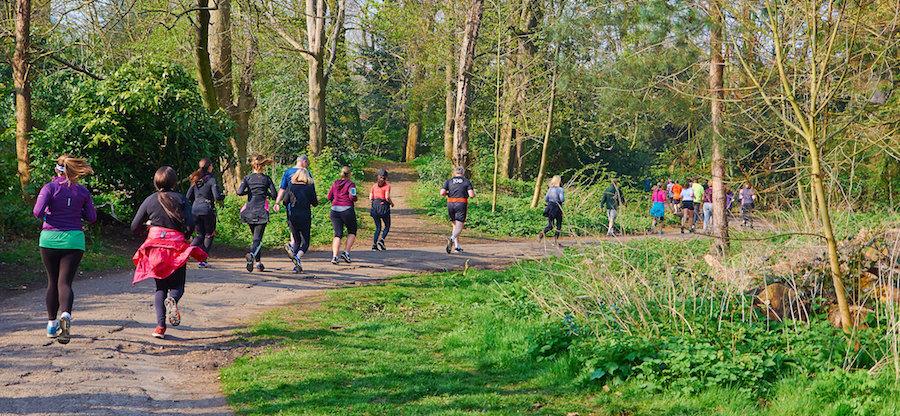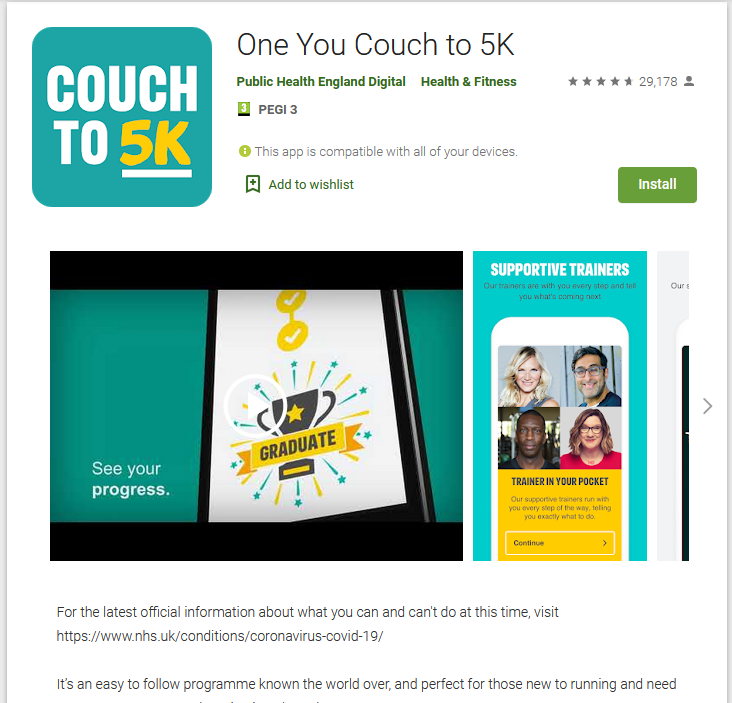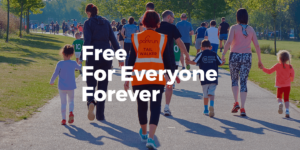Starting to run is quite easy – just go out there and do it!
It will affect your mind and your body. The impact will depend on your age and condition, but whatever your age and whatever your condition – start easy and increase gradually.
The first target may be to run for 30 minutes. Which means start running less than 30 minutes – for example run 2 minutes then walk 2 minute, and repeat. Several times. Gradually, over several weeks work up to a continuous 30 minute period of running.
Then consider 5 kilometres.
How often should you be doing it? What about 3 times a week, to start with? Then 5 times.
What do you need?
Trainers. Don’t spend too much. Avoid excessive cushioning. The most important thing is a good fit – it is horrible to run in shoes that hurt your toes or feet.
Clothes. For short runs, specialist clothes are not so important. Shorts are good, certainly to zero Celsius. As you spend more time outdoors and need to cope with varying weather and perspiration then you will develop some preferences. But not necessary for now. OK, for motivational reasons maybe you want to be comfortable when you set out.
What to take with you? A bum bag is useful if you start-off wearing too much, but for a short run all you need is a key to let yourself back in to your home. Water? Not necessary. Money? Are you really going shopping?
Phone. A phone app can help with tracking (see below), but is not essential. Some people like to listen to music or podcasts while running – it’s not for me, I prefer the music of my mind and the environment.
Tracking. It is good to track what you do. You can do this in a diary or spreadsheet or app. The basic information is date, distance, and time (duration). It is motivating to understand progress toward a target, and without tracking it is hard to make plans.
If you have a mobile phone put an app like Strava on it – that’s all you need to get going. To carry the phone you’ll need a waterproof pocket to strap around your arm, or a small bum-bag. Alternatively a basic running watch will give you the same information.
For a programme, look at ‘couch to 5k‘. There’s an app for your phone which gives encouraging prompts – you may want earbuds / headphones to keep this private. If you don’t like apps you can still look at what the UK NHS website has to say about the programme. Note – this is different from a tracker app like Strava.
The ‘parkrun’ is hard to beat as totem for running. It operates in almost 800 towns in the UK, and in many other countries all over the world. “Parkruns are free, weekly, community events all around the world. Saturday morning events are 5k and take place in parks and open spaces. Parkrun is a positive, welcoming and inclusive experience where there is no time limit and no one finishes last. Everyone is welcome to come along, whether you walk, jog, run, volunteer or spectate.”
There is likely to be one near you. Investigate! Most start at 9am on a Saturday morning and are finished an hour later. The process is quite simple. When you register online a bar-code is generated against you name. Print this off and take it with you. Wherever you do a parkrun everyone starts together and when you finish each person gets a token which they present to a scanner with a copy of their barcode. You reuse your personal barcode every time you run – thus a record is built up of your parkrun history.
In my town there are 3 parkruns each weekend at different locations (but not during Covid). The one I have attended regularly has 200+ participants, always there are some speedy youngster at the front and some slow walkers at the rear. There’s often at least one child in a pushchair and several dogs on short leashes. Some are trying for a ‘personal best’, others are there for a chat, yet others are there as spectators as well as participant taking in the sights and sounds of the crowd.
Most of my running is done alone and out in the countryside, so it makes a change for me to jog over to another part of town and run among other enthusiasts.
This could be one of your 3-5 runs a week!


